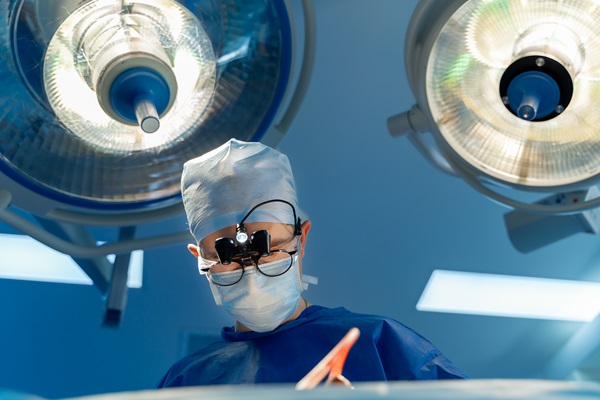Minimally invasive neurosurgery brings minimal recovery time, improves comfort, and lowers risks associated with traditional procedures. With techniques like smaller incisions, faster healing, and precise interventions, these advanced methods provide effective treatment for complex conditions while minimizing the physical and emotional toll on young patients. Consulting a pediatric neurosurgery team will give your child the professional care, support, and understanding they need during this challenging time.
Understanding minimally invasive neurosurgery
Minimally invasive neurosurgery involves advanced tools and technologies to access the brain, spine, or nervous system through small incisions or natural openings. For example, the surgeon may use microscopic instruments and image-guided navigation systems to perform the procedure precisely and efficiently. This is in contrast to traditional open surgery, which involves making large incisions to access the surgical site.
Why opt for a minimally invasive approach?
In pediatric neurosurgery, minimally invasive techniques are particularly beneficial because they prioritize reduced trauma and faster recovery in younger patients. These methods also lower the risk of long-term complications, preserve neurological function, and allow children to return to normal activities sooner. A healthcare team can discuss a patient’s options in greater detail during an appointment.
How this approach reduces recovery time
Only small incisions are needed
Smaller incisions are a hallmark of minimally invasive neurosurgery. These tiny openings cause less damage to muscles and soft tissues, which significantly reduces postoperative pain and scarring. Minimal tissue disruption allows patients to recover faster compared to traditional open surgery. Additionally, smaller incisions lower the risk of infection, further supporting a smooth healing process.
Faster healing
Another benefit of minimally invasive neurosurgery is faster healing. By reducing the trauma associated with larger incisions and extensive tissue manipulation, the body can more efficiently focus on healing the affected area. For pediatric patients, this allows them to resume developmental milestones and normal activities more quickly.
Lower risk of complications
Precise techniques used in minimally invasive neurosurgery reduce the likelihood of issues such as excessive bleeding, infection, or damage to surrounding structures. Pediatric patients, in particular, benefit from this reduced risk because their developing bodies are more vulnerable to the complications of traditional surgery. As a result, their recovery period can become smoother and less stressful.
Conditions minimally invasive neurosurgery can treat
Minimally invasive neurosurgery is effective in treating a wide range of neurological conditions, including many that commonly affect pediatric patients. Some conditions that benefit from this approach include:
- Brain tumors. Endoscopic techniques can remove tumors with minimal disruption to surrounding brain tissue.
- Hydrocephalus. Shunt placement or endoscopic third ventriculostomy (ETV) can be performed with small incisions and precise imaging guidance.
- Spinal conditions. Address herniated discs, tethered spinal cords, or spinal deformities with less impact on spinal structures.
- Epilepsy. Techniques such as laser ablation or stereotactic surgery offer effective options for controlling seizures while minimizing recovery time.
- Craniosynostosis. Endoscopic methods enable early intervention for this condition, reducing scarring and promoting a quick recovery.
The versatility of minimally invasive neurosurgery makes it a valuable approach for addressing various complex conditions in pediatric patients.
Contact a pediatric neurosurgery team
Our pediatric neurosurgery team at Dr. William G. Loudon, Pediatric Neurosurgery can provide expert guidance on minimally invasive options for neurological conditions. We combine advanced surgical techniques with compassionate care to strive for the best outcomes for young patients. Contact us to learn more about how our team can support your child through treatment and recovery.
Request an appointment here: https://www.drloudonpediatricneurosurgery.com or call Dr. William G. Loudon, Pediatric Neurosurgery at (714) 677-9463 for an appointment in our Laguna Niguel office.
Check out what others are saying about our services on Yelp: Minimally Invasive Neurosurgery in Laguna Niguel, CA.
Related Posts
What Parents Should Know About Pediatric Spina Bifida Treatment
Pediatric spina bifida treatment supports children born with this neural tube defect by addressing spinal, nerve, and developmental concerns from an early age. Parents who understand the key aspects of treatment are …
Common Neurotrauma Treatments for Young Patients
Neurotrauma in children requires fast, careful care that protects the brain, spine, and nerves while growth continues. A clear plan begins with an accurate evaluation, followed by targeted treatments that limit swelling, …
5 Signs Your Child Is in Good Hands with a Top Ranked Pediatric Neurosurgeon
Excellence in pediatric neurosurgery is the result of multiple qualities working together. A top ranked pediatric neurosurgeon demonstrates a commitment to lifelong learning, continually refining skills and techniques to remain current with …
What Is Gamma Knife Radiosurgery Used For?
Gamma knife radiosurgery is a non-invasive and precise technique used in radiation therapy to treat various conditions that affect the brain. It is a type of stereotactic radiosurgery that delivers a high …


